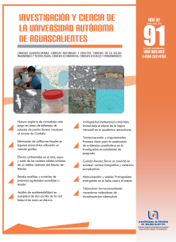Analysis of crash rates on two-lane toll highways in Mexico's federal network
DOI:
https://doi.org/10.33064/iycuaa2024914565Keywords:
Freeways, Crash, Road Safety, Crash Index, Factors, Variation RateAbstract
Unlike developed countries, where toll freeways typically have multiple lanes, a significant portion of Mexico's trunk highway system comprises two-lane toll highways (one-lane per direction). This article presents a descriptive analysis of traffic accident data reported on the two-lane toll highway system in Mexico to understand its current state of accidents. It was found that the global crash index on two-lane toll highways is approximately double that observed on the national highway network, revealing a higher accident rate on this type of road. Additionally, highway sections exhibiting a potential worsening trend in accident occurrence in the near future were identified. This study provides valuable information to decision-makers to enhance road safety management programs.
Downloads
References
• Caminos y Puentes Federales. (2021). Decenio de acción para la seguridad vial. Recuperado de https://www.gob.mx/capufe/es/articulos/decenio-de-accion-para-la-seguridad-vial-265479
• Centro de Estudios de las Finanzas Públicas. (2018). Retos del financiamiento de infraestructura en México. Recuperado de https://www.cefp.gob.mx/transp/CEFP-70-41-C-Estudio0015-260718.pdf
• Comisión Nacional de Seguridad. (2010). Accidentes y sus factores. Recuperado de http://www.cns.gob.mx/portalWebApp/appmanager/portal/desk?_nfpb=true&_pageLabel=portals_portal_page_m2p1p2&content_id=830068&folderNode=830052&folderNode1=810277
• Instituto Mexicano del Transporte. (2016). Evaluación del beneficio en seguridad vial al modificar una carretera de cuota de dos carriles a una configuración 2+ 1 con barrera central de cables. Recuperado de https://www.imt.mx/archivos/Publicaciones/PublicacionTecnica/pt465.pdf
• Diario Oficial de la Federación. (2020). Programa Sectorial de Comunicaciones y Transportes 2020-2024. Recuperado de https://www.dof.gob.mx/nota_detalle.php?codigo=5596042&fecha=02/07/2020#gsc.tab=0
• Federal Highway Administration. (2017). UNIT 4. Solving Safety Problems. Road Safety Fundamentals (pp. 3-54). North Carolina, U.S.A. Recuperado de https://rspcb.safety.fhwa.dot.gov/RSF/Unit4.aspx
• Instituto Nacional de Estrategia y Geografía. (2022a). Estadísticas a Propósito del Día Mundial en Recuerdo de las Víctimas de Accidentes de Tránsito. Recuperado de https://www.inegi.org.mx/contenidos/saladeprensa/aproposito/2022/EAP_VICACCT22.pdf
• Instituto Nacional de Estrategia y Geografía (2022b). Accidentes de tránsito terrestre en zonas urbanas y suburbanas (Accidentes). Banco de indicadores. Instituto Nacional de Estadística y Geografía (INEGI). Recuperado de https://www.inegi.org.mx/app/indicadores/?p=7&ag=00#tabMCcollapse-Indicadores
• Instituto Nacional de Salud Pública. (2018). México, séptimo lugar mundial en siniestros viales. Recuperado de https://www.insp.mx/avisos/4761-seguridad-vial-accidentes-transito.html#sup4
• Instituto Mexicano del Transporte. (2022). Anuarios Estadísticos de Accidentes en Carreteras Federales 2011-2021. Recuperado de https://www.sct.gob.mx/transporte-y-medicina-preventiva/autotransporte-federal/estadistica-de-accidentes-en-carreteras-federales/
• Instituto Mexicano del Transporte. (2023). Red Nacional de Caminos 2022. Recuperado de http://rnc.imt.mx/
• Secretaría de Comunicaciones y Transportes. (2018). Manual de Proyecto Geométrico de Carreteras 2018. México. Recuperado de http://sct.gob.mx/normatecaNew/manual-de-proyecto-geometrico-de-carreteras/
• United Nations. (2015). Average growth rate: Computation methods. Statistics Division (Issue No.07). Recuperado de https://repository.unescap.org/bitstream/handle/20.500.12870/935/ESCAP-2015-PB-Average-growth-rate-computation-methods-n7.pdf?sequence=1&isAllowed=y
Published
How to Cite
License
Copyright (c) 2024 Cyntia Elizabeth García-Díaz, Luis Alberto Morales-Rosales, Antonio Hurtado-Beltran, José Eleazar Arreygue-Rocha

This work is licensed under a Creative Commons Attribution-NonCommercial-ShareAlike 4.0 International License.
Las obras publicadas en versión electrónica de la revista están bajo la licencia Creative Commons Atribución-NoComercial-CompartirIgual 4.0 Internacional (CC BY-NC-SA 4.0)









